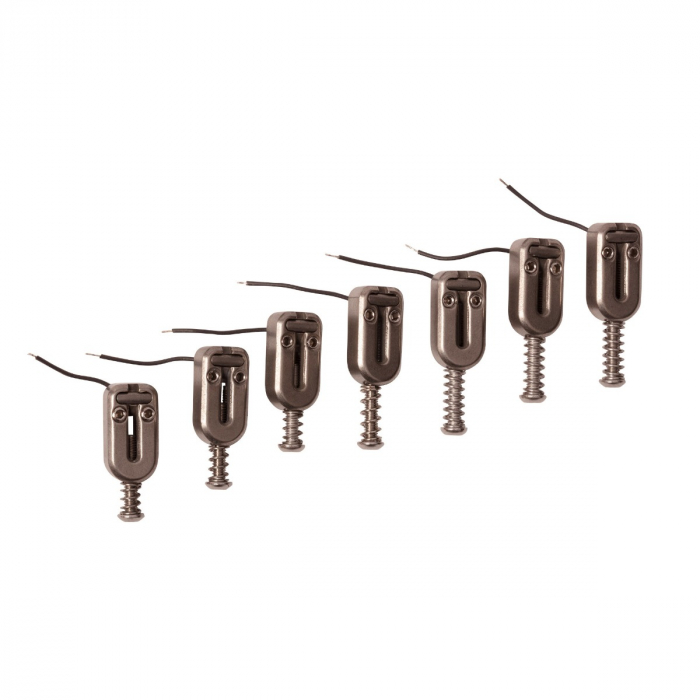

I'm getting close on the finger strength on the bends and very like next change I will go back up to 10's on the HB and will probably consider flat wounds.

My two guitars I play the most, this one and my PRS Paul's, both have 9's now. I like them and I really don't feel there is a lot of tone drop off. But since I'm working on bending, and it seems I am playing this PRS HB more than any other guitar, the last time I had new strings put on I went with 9's, D'Addario NYXL's. All you guys have suggested, as do other sources I've read, at least 10's on a hollow body. Secondly, since it's my thread, I'll give an update. If you want fine craftsmanship, great sound, and an instrument that you can actually play, give PRS a try. The higher end models are so beautiful, they're often purchased as investments or works of art. I don't remember where I read it and, let's consider the source, the interwebs. Paul Reed Smith (PRS) guitars and amps are crafted by musicians for musicians. First off, regarding Billy I remember reading somewhere that he has some health issues and that is part of the reason he uses lighter strings. There are a few different things that can cause strings to break at the saddle. I think I'll likely go back to Gibson Brite Wire Nickel 10-46 next change, although I hear the DÁddario NYXL's a very good) These really arent any different than you'd use on a Les Paul I think.įor acoustic (1969 Ovation) I like the Martin Acoustic SP Bronze 11/52Īpparently Billy took the advice to heart because the inter webs say he plays 7's now.Ī couple things. Ron I'm currently using DÁddario Chrome XL Jazz Light Flat Wound 11/50 on my Godin Archtop, (11.15.22w.30.40.50 Like) and DÁddario XL Nickel Round Wound 10/46 Regular Light gauge on my Gibson ES 335. While working on bending I wanted to have something a little lighter while developing the skill and finger strength. When the string rolls back and forth too much, it can wear out much more quickly at the point of saddle contact. The most common issues are when the saddle has a sharp edge, and when the string has too much room to roll. I'm really curious because on my Strat and PRS Pauls I have gone to 9's at least temporarily. There are a few different things that can cause strings to break at the saddle. You hollowbody guys and especially PRS hollowbody guys, what strings do you use? Heavier than what you would use on a solid body? Its a sporadic mix of white noise and static that occurs even when both volume knobs are down to zero. Im getting some white noise and static from the mix / piezo output. I recently purchased a used SE HB Piezo off of Reverb. I don't remember where, not here, someone was talking about using heavier strings on a hollowbody for the tone. I was wondering if anyone could offer any advice or guidance. *All PRS SE Hollowbody instruments are factory set-up with PRS Classic 10-46 gauge strings.I have no idea what strings are on my new PRS Hollowbody. *The PRS SE Paul's Guitar is factory set-up with PRS Classic 10-46 gauge strings. *The PRS SE Mark Holcomb SVN is factory set up with 10-64 gauge strings. *The PRS SE 277 is factory set-up with 14-68 gauge strings.

Most PRS SE* solidbody instruments are factory set-up with PRS Classic 9 - 42 gauge strings. *The PRS DGT is factory set up with PRS Signature David Grissom 11 - 49 gauge strings with plain 3rd. *The USA manufactured PRS piezo equipped Hollowbody models are factory set up with PRS Signature 11 - 49 gauge strings with a plain 3rd. Most USA manufactured electric PRS instruments* are factory set-up with PRS Signature 10 - 46 gauge strings. We set-up the guitars at our factory with the following string gauges: Used in conjunction with the piezo output jack, it is the output for the magnetic. Used on its own it is the output for the magnetic and piezo pickups together. Mix/Mag Output: The Mix/Mag output has a dual function. But since Im working on bending, and it seems I am playing this PRS HB more than any other guitar, the last time I had new strings put on I went with 9s, DAddario NYXLs. baggs The two output jacks function as follows: Piezo Output: Output for the piezo signal. These measurements were taken either from the official PRS website, or, in case this information wasnt provided, by researching multiple online marketplaces and forums where owners of this model have posted. All you guys have suggested, as do other sources Ive read, at least 10s on a hollow body. The PRS SE Hollowbody II Piezos neck thickness is approximately 0.86 (21.8mm) at the first fret, and 0.96 (24.4mm) at the twelfth. PRS Strings are the most consistent and highest quality strings made in the world today. This may include checking the action, intonation, neck relief, pickup height, and nut slots of the instrument. Secondly, since its my thread, Ill give an update. PRS Guitar Strings are proudly manufactured in the USA and come in various gauges to compliment your playing style. If you decide to change your string gauges from the factory installed string gauges, please be sure to remember that the guitar may need to be set-up to accommodate this change.


 0 kommentar(er)
0 kommentar(er)
